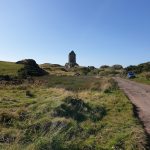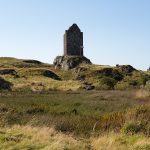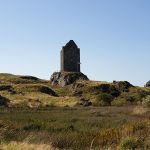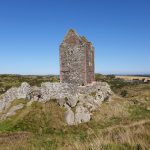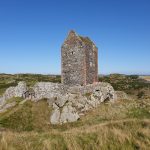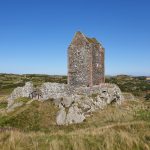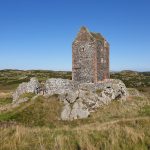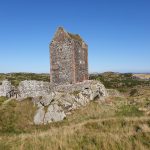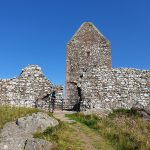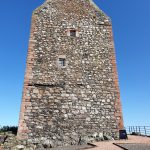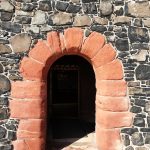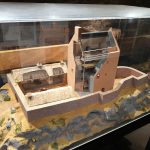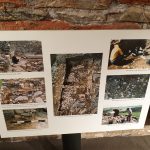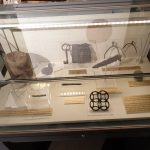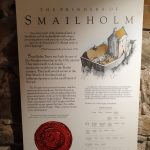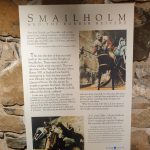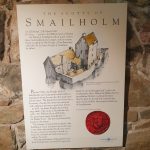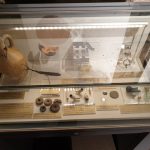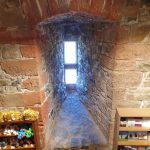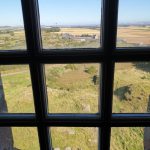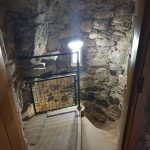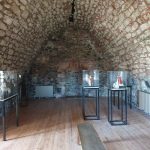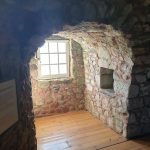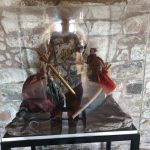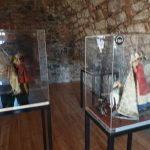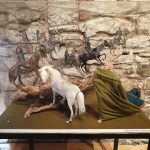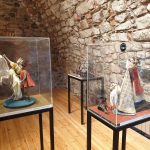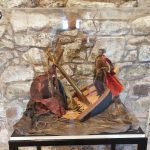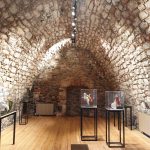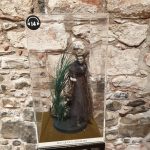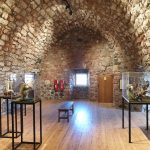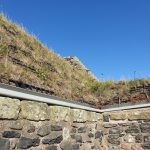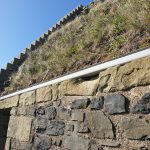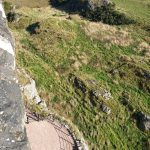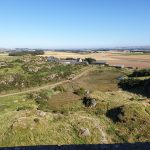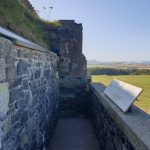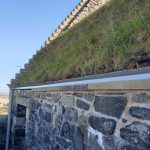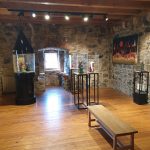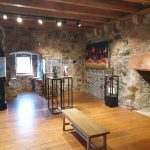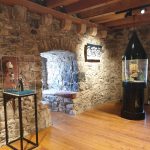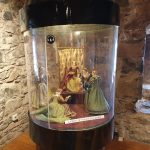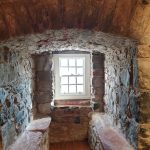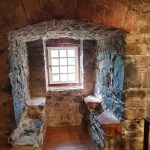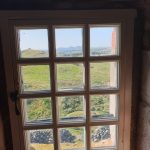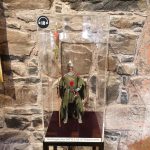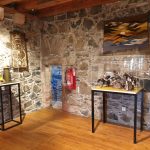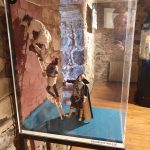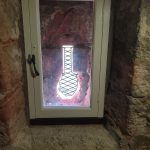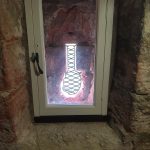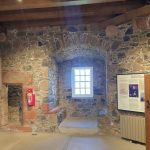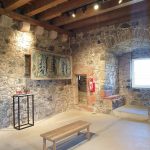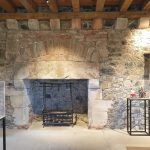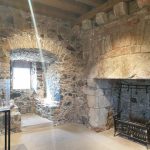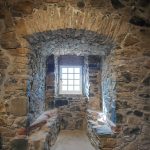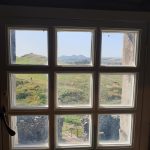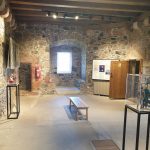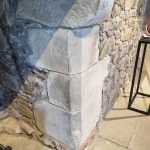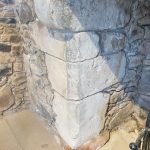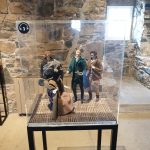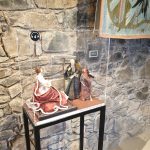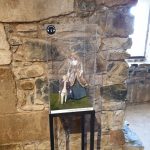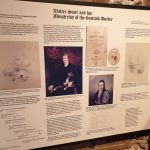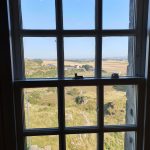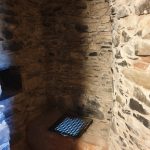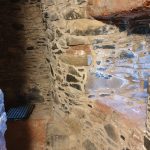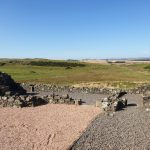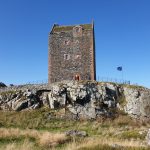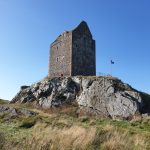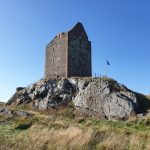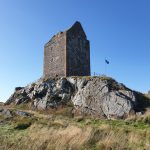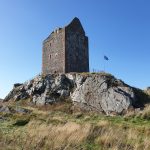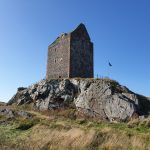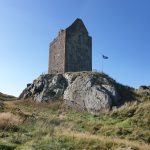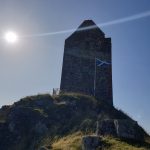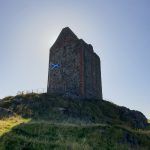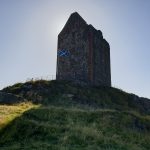Smailholm Tower
Smailholm Tower
Smailholm Tower – A Classic Border Peel Tower of the early 15th Century
Smailholm is strongly situated on a rocky outcrop above a dark loch and seven miles north-west of Kelso and commands extensive views to the Border and beyond. It is a notable landmark of the Scottish Middle March and is visible for miles around. The tall well-built tower is surrounded by the ruins of a barmkin and outbuildings.
The lofty vaulted ground-floor is provided with corbels to carry an entresol floor. Above this the tower rises to five storeys in all. A stone slabbed roof is built over the vaulted ceiling of the upper storey and access to the parapet-walk, which crowns only the long sides of the tower, is gained from this level.
Smailholm was probably built at the start of the 15th century by a branch of the Pringle family. For a detailed account of the history of the Smailholm branch of the Pringle Clan, see the Smailholm chapter in Alex Pringle’s book ‘The Records of the Pringles of the Scottish Border’.
The tower was acquired early in the 17th century by the Scotts of Harden. Sir Walter Scott spent much of his childhood at nearby Sandyknowe, the farm of his grandfather. Scott took the artist J.M.W. Turner to visit the tower in 1831. Turner sketched the dramatic setting for use as an illustration to Scotts Poetical Works. The tower was used as a setting by Scott both in Marmion and The Eve of St John .
In 1950 the tower was entrusted to the guardianship of the then Ministry of Works (now Secretary of State for Scotland) by the owner, the Earl of Ellesmere. It was restored in the 1980’s as a showpiece, and is a very good one. Smailholm Tower is now in the care of Historic Scotland. A series of tableau illustrating scenes from Scott’s “Minstrelsy of the Scottish Borders” is on display in the tower. It’s open to the public.
Historic-Scotland.gov.uk – Smailholm TowerThe Smailholm village website: www.smailholm-village.org.uk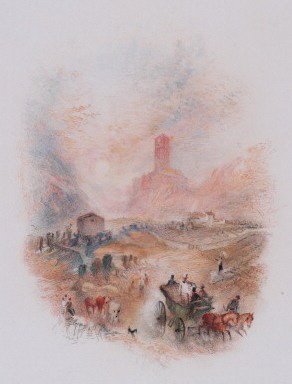
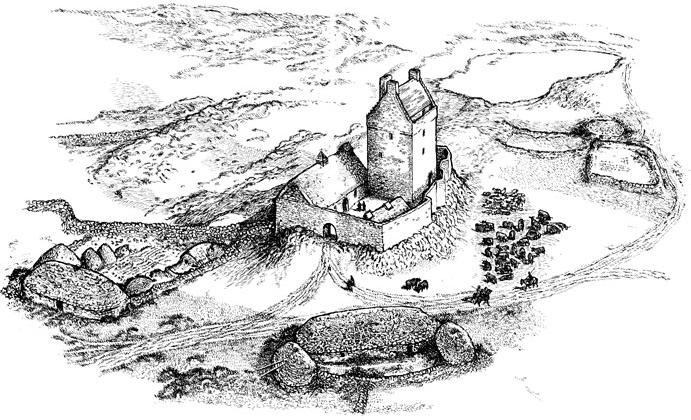
by George Good and Christopher Tabraham (Society of Antiquaries of Scotland, 1988). View the report on the archaeological investigation at Smailholm on the ‘Archaeology Data Service’ website.
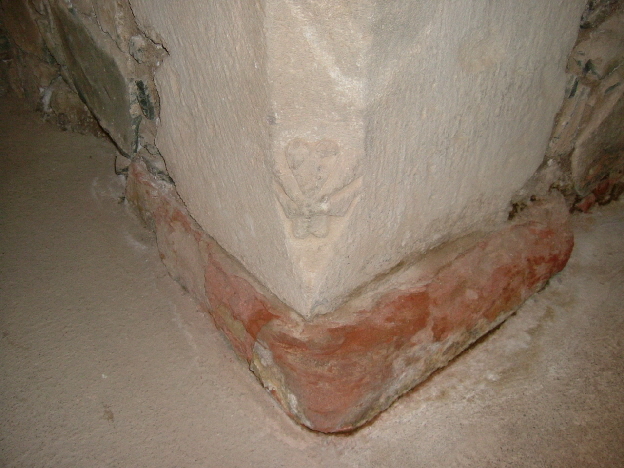
There has long been an error in the official guide book to Smailholm Tower. It states that in the main hall, the carving on the left hand side of the fire place is the heart device of the Earls of Douglas, who were the ‘Overlords’ of the Pringles until the year 1455. However if you take a close look in the below picture, the carving is clearly an upside down Scallop shell. The Scallop shell is the primary heraldic device of all branches of the Pringle family, as can be clearly seen on our Pringle Heraldry page.
Lineage of the Pringles of Smailholm
- Robert De Hoppringill, who is believed to have been the son of William Hoppringill of that Ilk,d. 1391. who was the sixth known chief of the clan. (Squire to Archibald, 4th Earl of Douglas – granted by him the lands of Pilmuir in Lauderdale).
- David De Hoppryngille of Pilmuir and Smailholm (Ranger of the Ward of Tweed) Builder of Old Gala House. Had 3 sons: 1. James. 2. Adam of St Johns Chapel (Chapel on Leader).
- James (1) of Pilmuir, Smailholm, Redhead (Whytbank), Blindlee, Mossilee and Galashiels. Had 5 sons: 1. David of Smailholm and Blackhouse. 2. William 1st of Torwoodlee and Clifton. 3. Alexander 1st of Trinlyknowe. 4. John 1st of Blindlee. 5. David (senior) of Tynnes (ancestor of the Pringles of Buckholm.
- David (2) Pringill of Pilmuir, Smailholm and Redhead (Whytbank). Had 4 sons: 1. David (killed at Flodden 1513). 2. John his heir. 3. James of Woodhouse and Whytbank (Redhead). 4. William.
- John Hoppringill of Smailholm and Pilmuir… Had 3 sons: 1. Andrew his heir. 2. David of Bardarroch. 3. James.
- Andrew Hoppringill of Smailholm, Gala, Pilmuir and Blackchester. Had 2 sons: 1. James. 2. Robert of Houliston.
- Sir James Hoppringill of Smailholm, Gala, Pilmuir, Mossilee, Blackchester and Halcroft. MP and Sheriff of Selkirkshire. Had 4 sons: 1. David. 2. James. 3. John his heir. 4. George (Sheriff-depute of Selkirkshire). One of his daughters, Jean married Hugh Scott, who was the ancestor of the Scott Lairds of Gala.
- John Pringill of Smailholmcraig. No issue. The Scotts of Gala became the heirs of line and the Pringles of Whytbank became heirs male.
Notes by James Bruce Pringle
(younger brother of Sir Murray Pringle of Stichill, 10th Bart.)
Feb 2006. Many years ago I corresponded with Christopher J Trabraham and I queried the date the tower was built – at that time it was described as early 16th c – I argued that it must have been built before 1455. He wrote to me and concurred with my historical conclusion on stylistic grounds. It was built late 14th c or early 15th c.
Jan 2012. In my past year’s research a document was found that proves Alexander Pringle wrong in his chapter on Smailholm. George, Robert and Alexander were not David of Pilmuir’s brothers. In fact, they were not of Smailholm but they were senior to Smailholm and their descendants remain senior to Smaiholm.
Robert, Douglas squire, was the first of Pilmuir and parts of Smailholm, including the tower. Both lands were given to him by the Earl of Douglas in 1408. As far as Smailholm is concerned the original charter was dated 16th November 1408 given by Archibald, earl of Douglas, lord of Galloway, Lochmabane, to Robert of Hoppringill, ‘scutifero nostro’ and Isabella, his spouse, of easter part of demesne lands in the barony of Smalehame, sheriffdom of Roxburgh, a third part of adjoining husbandlands and tower of Smalehame. The charter was later confirmed on 2nd March 1451-2. However, David of Oppringill presented on bended knees to Archibald, earl of Douglas, lord of Galloway and Annandale, a petition on 10th January 1432-3 to have the charter renewed in his favour as son and heir to his father Robert. Witness to which was George of Oppringill. So George, Douglas squire, could not be David’s older brother, as he obviously accepted that David was Robert’s son and heir. But George was definitely senior to him in the family hierarchy. The Pringles of Smailholm are the oldest cadets of Pringle of that Ilk. And Robert was probably a younger son of William of that Ilk who died in 1390-1. Isabella may have been a Rutherford because of a later marriage between the two families within the third and fourth degree of consanguinity.
It appears that the tower was already there. But it underwent extensive rebuilding because that confused the experts on setting a date of construction. The truth sometimes hurts! I am convinced that the tower was either rebuilt or had a massive rebuild sometime between 1409 and 1455, probably before 1425.
I am convinced that William, constable of Cessford Castle and of Craigleith and Alexander of Trinlyknowe his brother were sons of either George or Alexander, Douglas squires – both later cadets of that Ilk than Smailholm, which makes them senior.
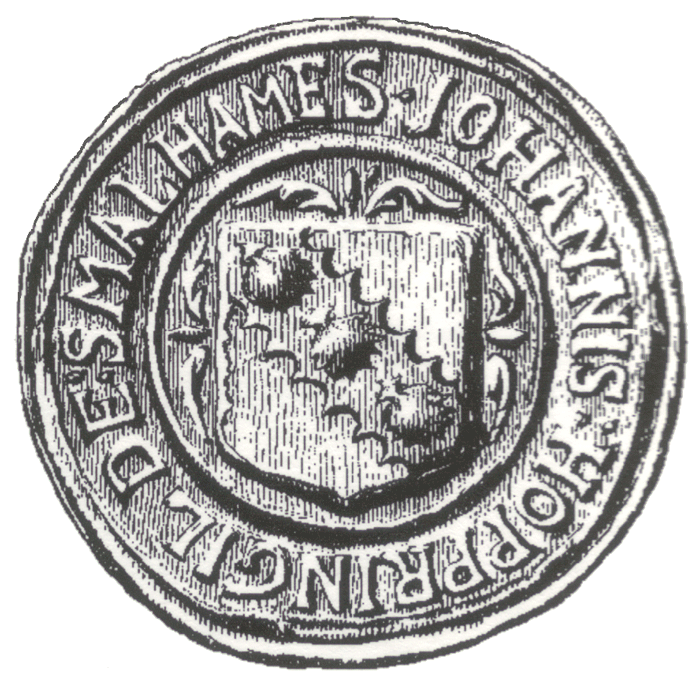
The 1537 Seal of John Hoppringill of Smailholm and Gala, the 5th Laird.
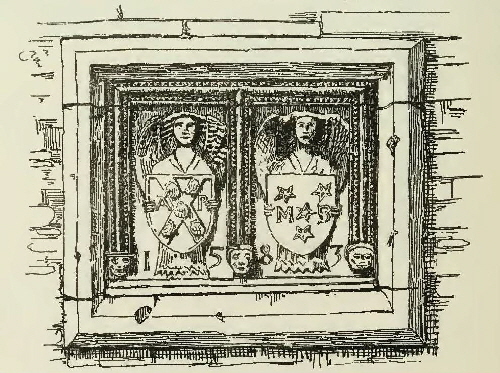
The 1583 Arms of Andrew Pringle of Smailholm and Gala, 6th Laird, on the wall of his house, Old Gala House.
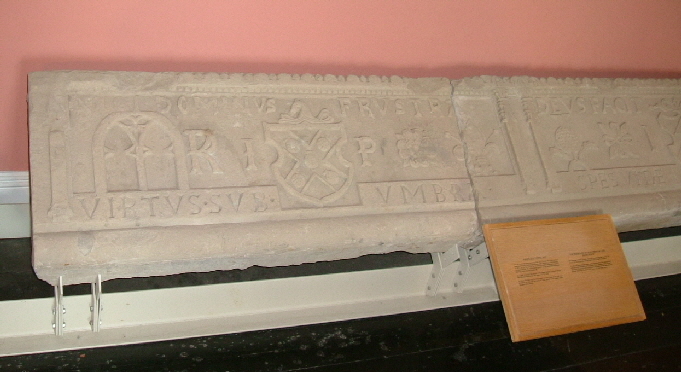
The 1611 fireplace lintel from Old Gala House, with the Arms of Sir James Pringle of Smailholm and Gala, 7th Laird.

